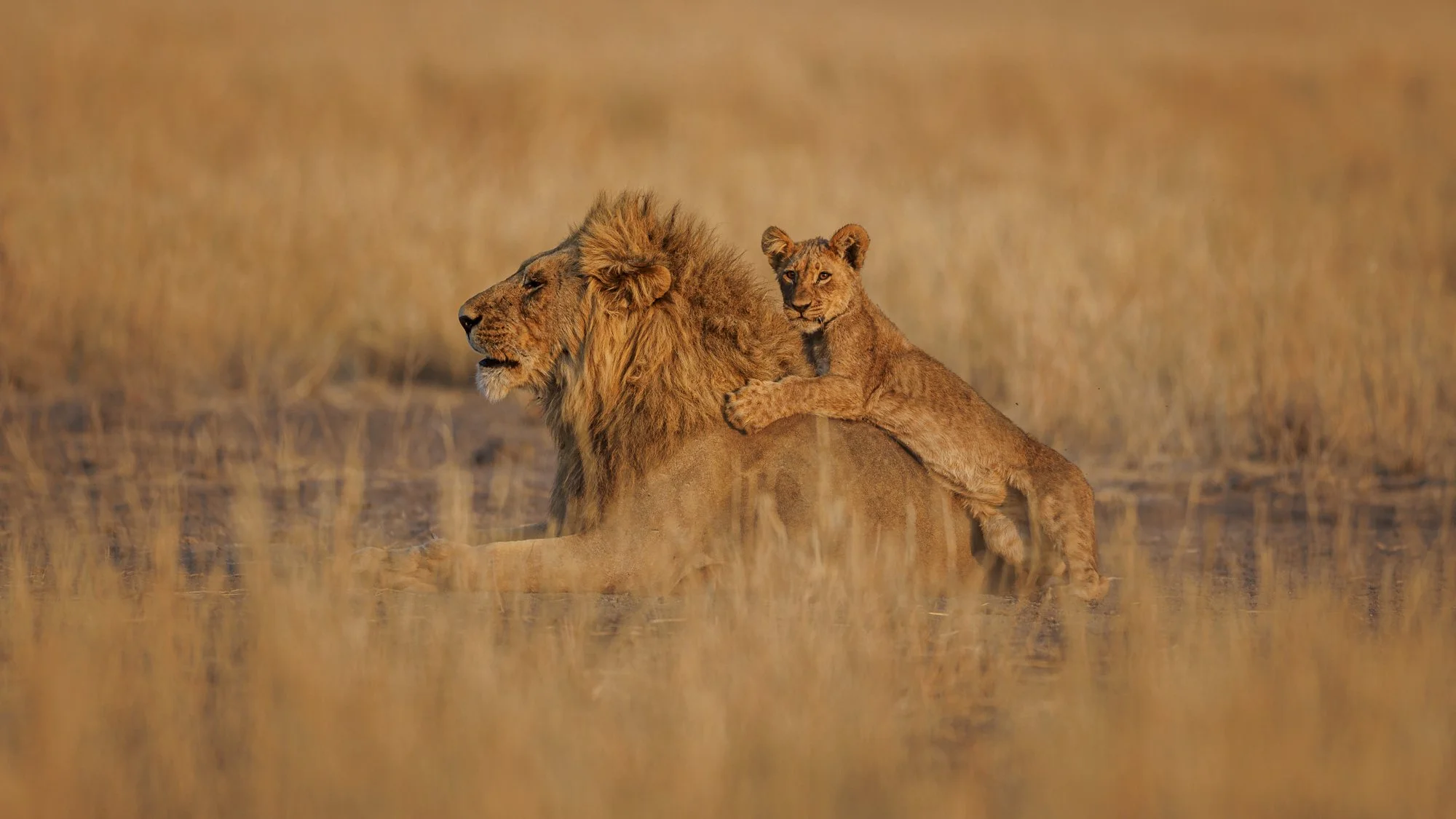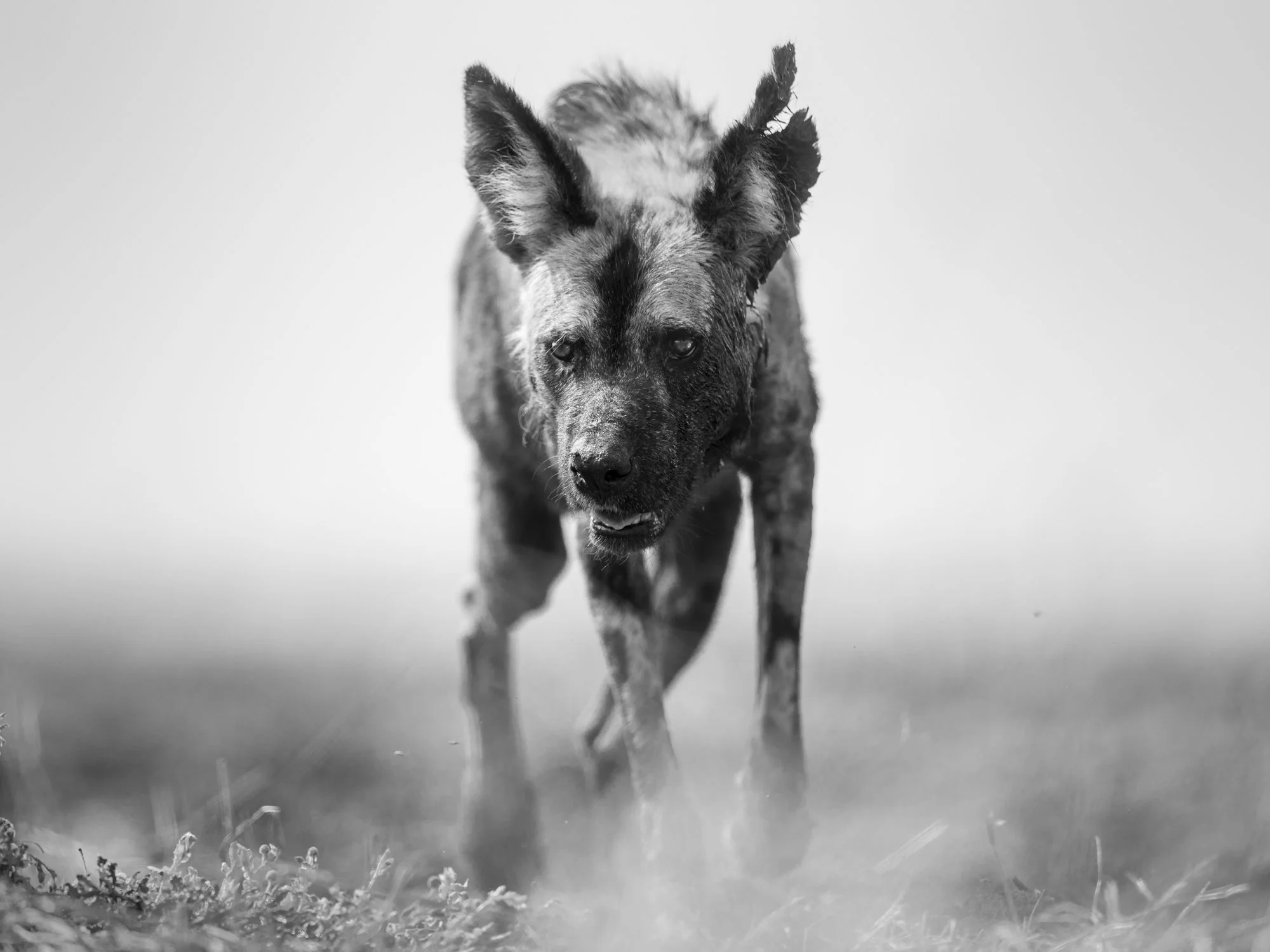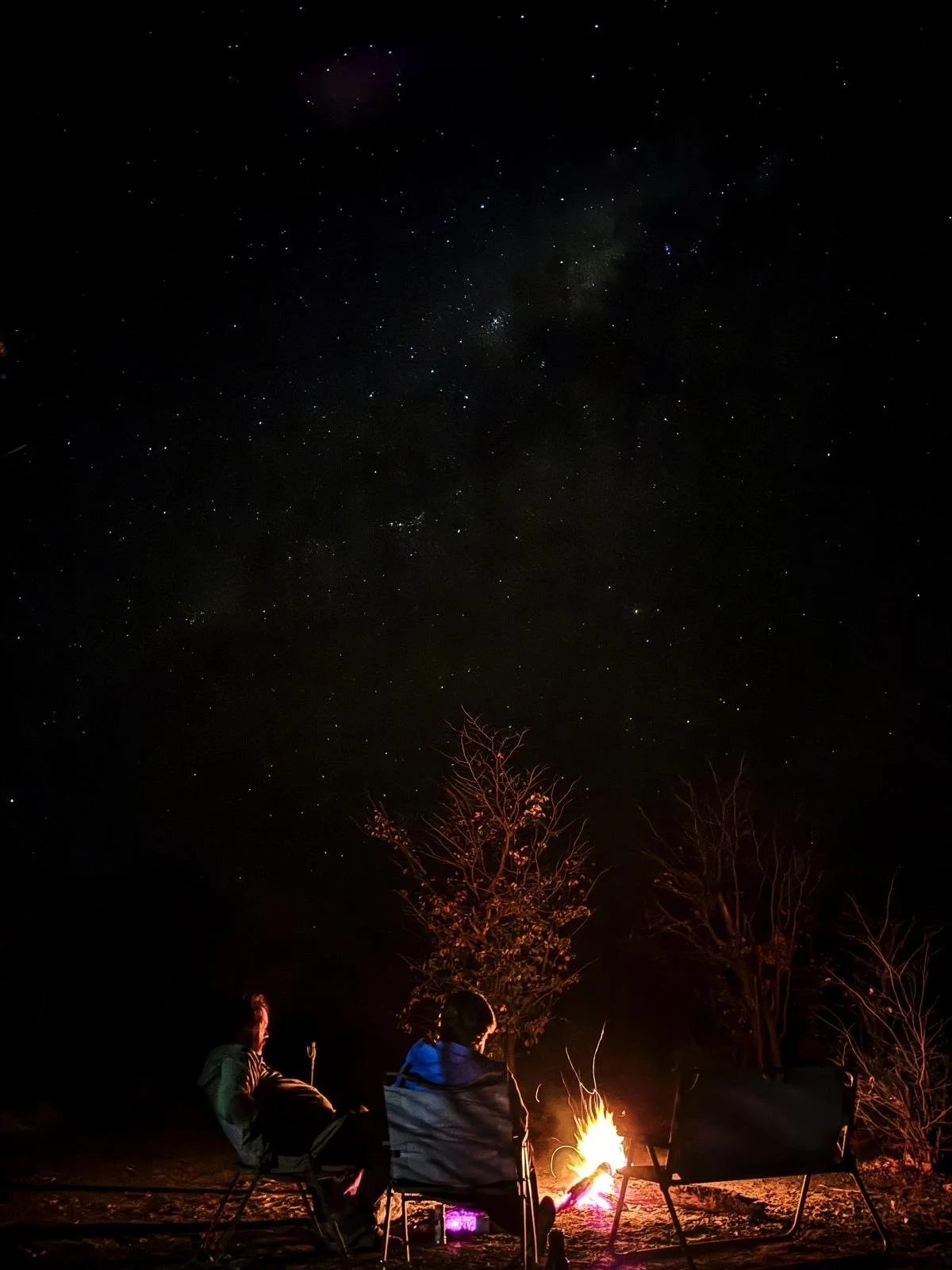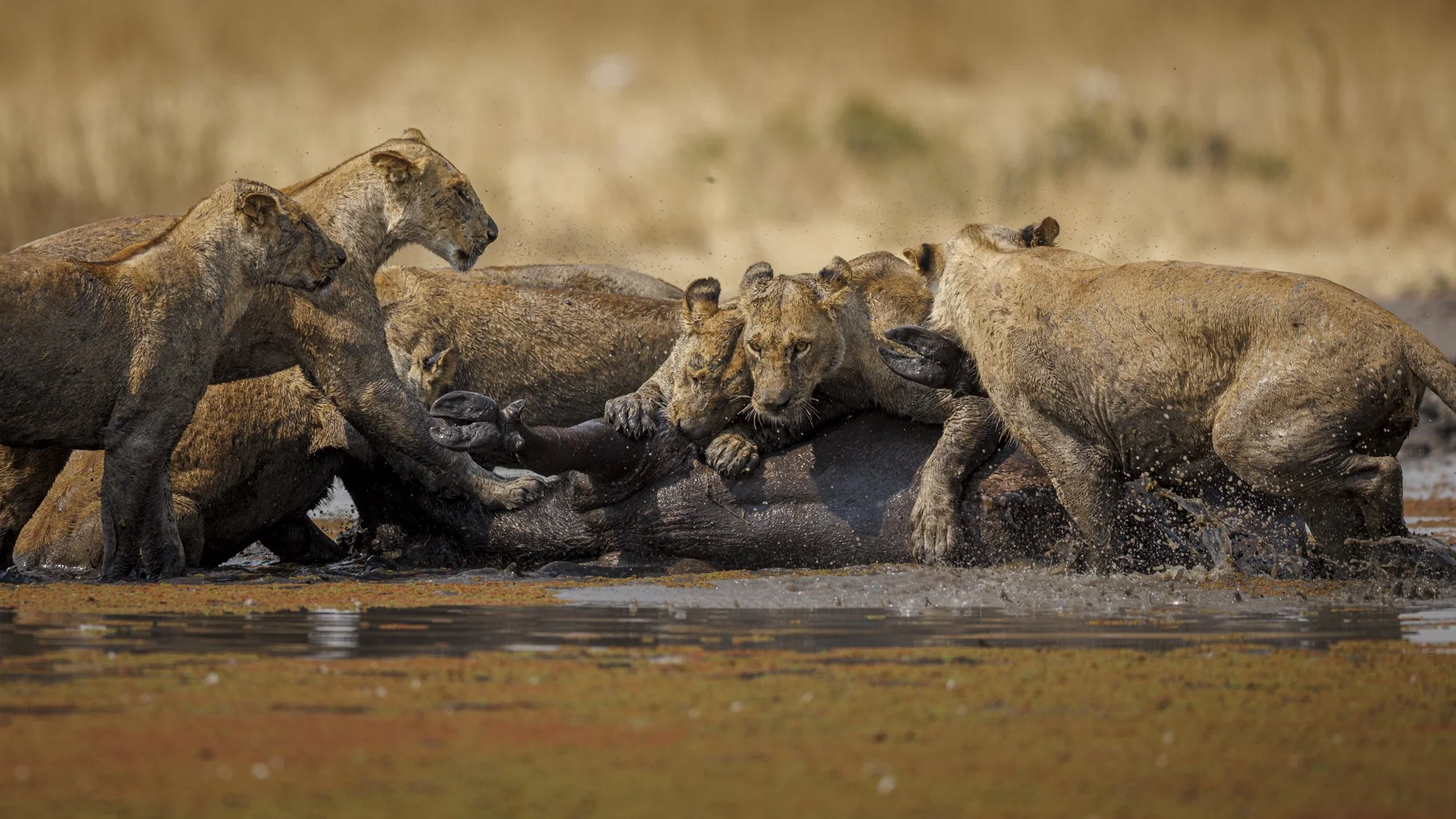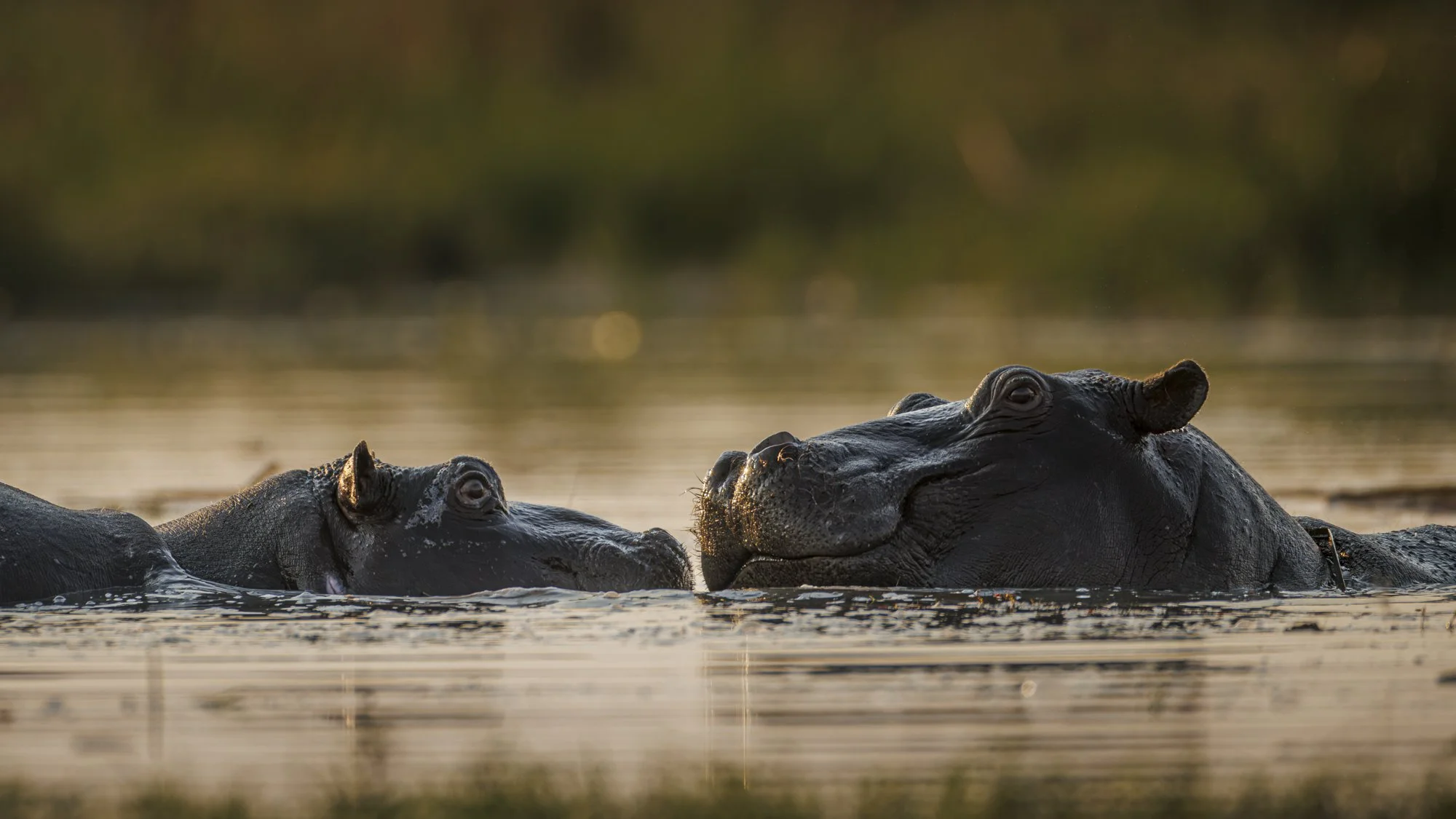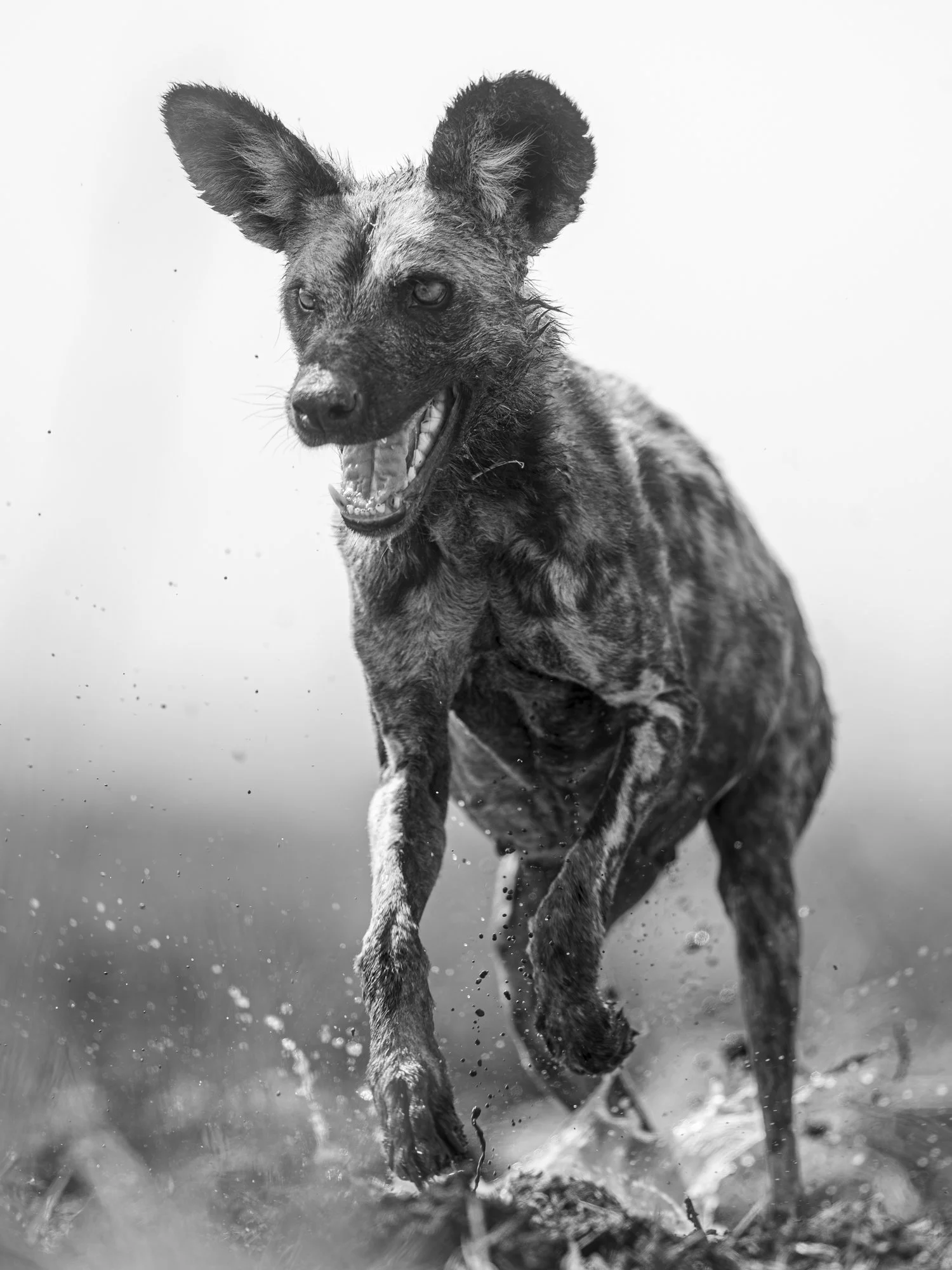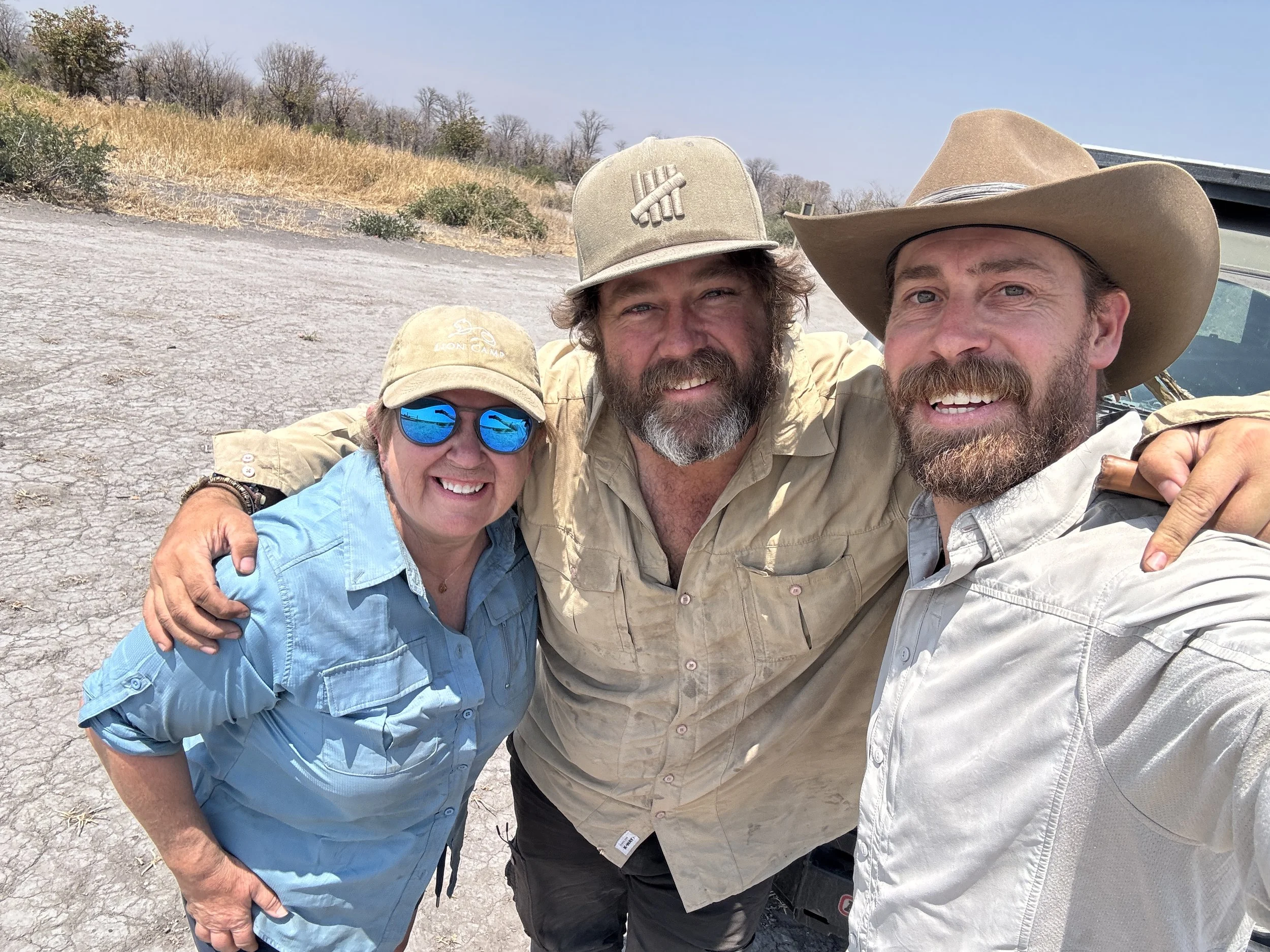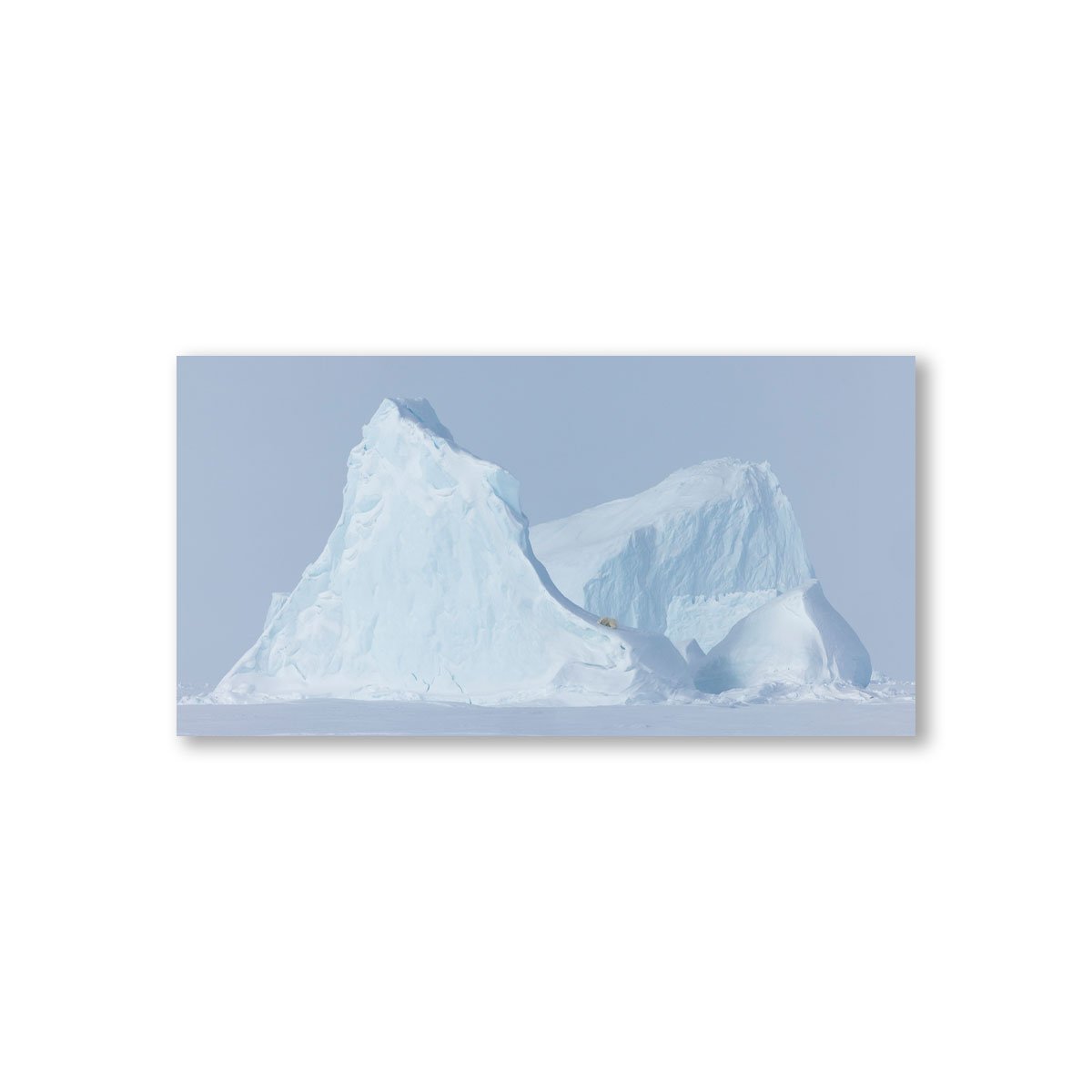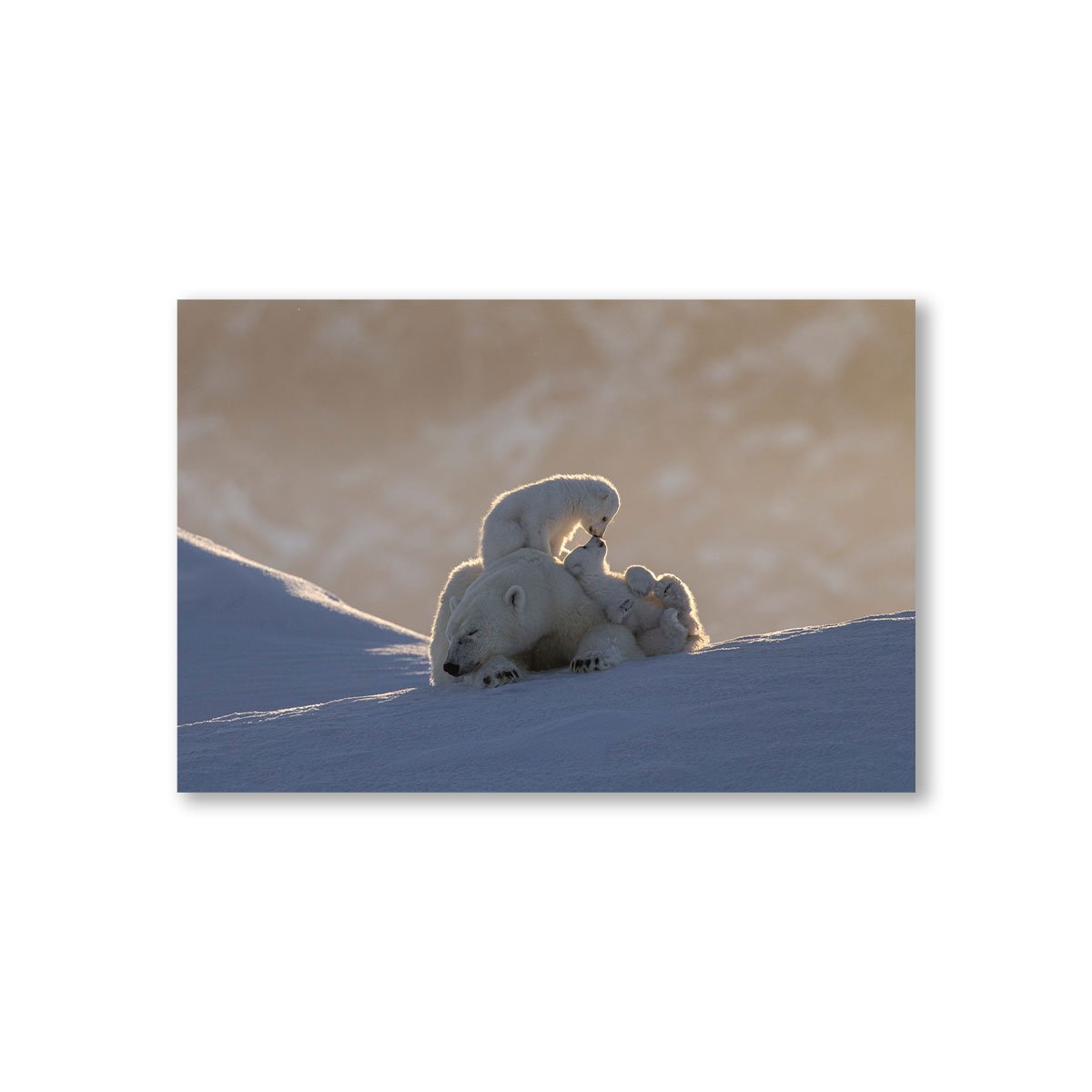MOKETE: BOTSWANA’S NEW WILDLIFE DESTINATION
Chobe Pride lioness stands on termite mound
Mokete: Botswana’s New Wildlife Destination
I recently returned from a month-long journey through Africa on an expedition that took me back to South Luangwa in Zambia and the open plains of Amboseli. However this trip also held something entirely new. For the first time, I ventured into a little-known corner of Botswana called Mokete, a rising star on the safari map where the Kalahari Desert meets the Okavango Delta.
What I found there was a place that surprised me not by its beauty but by its rawness. It’s a living, breathing ecosystem that emerged almost overnight thanks to the power of nature, and I got a front-row seat to the evolution of an ecosystem in real time. I honestly believe that for photographers and wildlife enthusiasts, it offers one of Africa’s most exciting new frontiers for photo safaris and wildlife experiences.
Minimalist portrait of a Lion King
Discovering Mokete: From Dry Plains to Thriving Wilderness
I first heard about Mokete through my friend Russell MacLaughlin, a celebrated wildlife filmmaker who has worked on projects for BBC, National Geographic, and Netflix. Russell has been filming in Mokete for the last three years, and every so often he would send me clips and updates that left me in awe, with predator scenes that almost jumped out of the screen they were so visceral and powerful.
When I told him I’d be in Zambia in September, I asked if I could join him for a week before heading to Amboseli. A plan quickly took shape, and soon I found myself in Maun, the gateway to the Okavango. From there, we embarked on a three-hour bumpy drive to Mokete, the kind of road that reminds you you’re heading somewhere wild and far removed from the polished safari circuits.
Lion Cub sits on top of his Lion King Dad
The Making of a New Ecosystem
On the way, Russell explained what makes Mokete so extraordinary. Before 2007, this area which is part of the Mababe Depression, was bone-dry, a largely lifeless expanse between the Okavango Delta and Chobe National Park. Everything changed after two earthquakes, one in 2007 and another in 2017, altered underground water channels. Slowly but surely, water began spilling from the Delta into the Depression.
This hydrological shift created a new ecosystem where none had existed before, with a lush floodplain that now acts as a magnet for wildlife. During the dry season, when water sources across Botswana shrink, Mokete becomes a lifeline. Thousands of buffalo, elephants, zebra, sable, and roan antelope gather here, drawing in predators like lions, wild dogs, cheetah and leopards.
For a wildlife photographer, this transformation represents an unparalleled opportunity to visit a new wildlife destination literally in the making, where natural drama is unfolding daily and at all times of the day.
Wild Dog known as “Torn Ears” on the move
Camp Life: Back to the Roots of Safari
Russell’s camp was simple and a delightful throwback to how safaris once were. Two main tents housed Russ and his friend and colleague John, while three smaller tents provided sleeping quarters for other members of his crew when needed. A mess tent stored supplies and camera equipment, and there was a makeshift shower setup and a campfire where we cooked dinner and brewed coffee each morning. I took over the coffee duty when John left and was quite proud of myself for making a fire and boiling the water for fresh coffee. I also had to improvise when a hyena stole our kettle!
Next door stood the new Wilderness Mokete camp, the latest of Wilderness camps in Africa that offers guests a chance to experience this wilderness in luxury and comfort. Russell had been granted exclusive filming access to the area before the camp’s construction, and his footage has been instrumental in showcasing Mokete’s potential to Wilderness Safaris and their clients.
For me, the raw rustic simplicity of his temporary setup made the experience even more special. The crackle of the fire, the distant roar of lions at night and hyenas as dinner guests meant this was safari like I haven’t had for a long time- totally immersive, unpredictable, and deeply personal.
Camp fire dinner with Russ and John
A Wildlife Photographer’s Dream
Being able to immerse myself in Russell’s world for a week gave me a very privileged view of Mokete. Unlike other projects, the last three years for Russell has allowed him the freedom where he can decide the creative direction from start to finish and I could see the genuine excitement that this gave him.
I also quickly saw why Mokete is so special. My first morning in the field was unforgettable. A cheetah, a mesmerizing Qualea murmuration and then looking to the horizon it seemed to shift and shimmer but not from heat and haze, but from movement. A black line stretched as far as the eye could see with thousands of buffalo moving as one.
The sheer scale was staggering. In all my years of wildlife travel, I had never witnessed buffalo herds of this magnitude. And where there are buffalo, there are lions. Mokete is home to at least three lion prides — the Mokete, Chobe, and Southern prides and each has adapted to this new landscape and thriving off the abundance of prey.
It was the eternal battle between lions and buffaloes that was continuing to deliver incredible hunting and kill sequences for Russell’s documentary. Russell shared stories of filming hunts that defied belief. In August, the Chobe pride, more than twenty strong, had taken down over a dozen buffalo in under an hour. It sounded mythical — until I witnessed my own encounters.
Lioness on Buffalo kill
Predator and Prey in Perfect Balance
During my seven days in Mokete, I saw three lion kills — more than I’ve witnessed in the past fifteen years of safaris combined. One hunt in particular remains burned into my memory.
This hunt by the seven Chobe pride females took place at 2pm in scorching heat and was a masterclass in hunting strategy. We found a small breakaway group of about twenty buffalo near a marsh, not far from camp. Russell suspected the lions were nearby as they had been spotted that morning. Within minutes, we found the lionesses, seven of them, all hidden from view of the buffalo.
What happened next was pure strategy. The lionesses fanned out in a semi-circle around the herd, each taking a position that funneled the buffalo toward a kill zone. One lioness climbed a termite mound to make herself visible, deliberately revealing her position so the buffalo would veer left and directly toward the ambush. Within seconds, chaos erupted. It was totally exhilarating to see such powerful predators take down a huge buffalo.
Russell captured the sequence with a drone, his camera hovering above as the lions brought down their prey. As he filmed, I photographed from an adjacent window, careful not to cause any unnecessary movement in the vehicle. The result was a set of images that not only documented the hunt but gives an intimate view of lionesses at the height of their power.
Chobe pride lionesses take down a buffalo
Lionesses on buffalo kill
Beyond the Lions: Diversity and Spectacle
While lions dominate Mokete’s drama, they are only part of its allure. During my time there we came upon herds of sable and roan antelope — species often elusive elsewhere in Africa. Here, they were in abundance, grazing confidently among elephants and buffalo.
The proximity of Mokete to Chobe National Park also contributes to its extraordinary wildlife density. Massive herds of elephants migrate through the area, particularly during the dry months, gathering at Mokete’s water sources in numbers rivaling those of Amboseli. For wildlife photographers, these scenes of elephants coming to water at sunset and antelopes backlit by golden dust offer endless compositions.
Predators beyond lions also roam Mokete. A pack of African wild dogs has taken up residence nearby, and one female was close to denning during my stay. With luck, Russell might soon capture the next generation of pups on film and future visitors could witness one of Africa’s rarest predators thriving in this emergent ecosystem.
Portrait of Roan Antelope
Portrait of Hippo mother and young calf
The Sky Comes Alive: The Quelea Murmuration
Every morning and again during the golden hour of late afternoon, the sky above Mokete filled with motion — hundreds of of thousands of red-billed quelea moving in synchronized patterns. Their murmuration rippled like smoke across the sky, constantly shifting shape. It was utterly mesmerizing to see at first hand.
My phone footage could barely do it justice, whilst Russell’s through the innovative use of his drone has been able to capture it as a tapestry of sound and motion. It’s going to make a stunning part of his final film.
The Transforming Power of Water
What struck me most about Mokete wasn’t just its wildlife, but its origin story. To stand in a place that, twenty years ago, was barren and now pulses with life, is to witness nature’s resilience firsthand.
Water has transformed Mokete from emptiness into abundance. It’s a reminder that conservation isn’t always about restoring the past but sometimes it’s about protecting the new. The collaboration between filmmakers like Russell and conservation pioneers such as Wilderness Safaris I hope ensures that this fragile ecosystem will be managed sustainably, balancing access with preservation.
Russell has also seen how the rains when they come can change the landscape. As the last year brought big rains the grass when I was there was long and yellow, making spotting the lions challenging at times, but I loved the shimmer of the oat grass in some compositions. The previous year the grass was short and green. For wildlife photographers and enthusiasts seeing the changes in the landscape offers a myriad of possibilities.
Wild Dog splashes through water
Planning Your Own Mokete Safari
So if you’re planning a Botswana safari and crave something beyond the well-trodden Delta channels, Mokete should be at the top of your list. The new Wilderness Mokete Camp offers comfort and access while maintaining an intimate connection with the environment.
This destination is raw and remote with exceptional wildlife density, and a sense of discovery rare in modern Africa. This is not a mass-tourism destination but a place for those who value the wild in its purest form and for photographers who want to go off the beaten path and have the opportunity to capture predators and prey in the most visceral way.
When to visit:
June to October is ideal for game viewing, as animals congregate around the remaining water sources.
During this period, visibility is excellent, and the chance to witness predator-prey interactions is at its peak.
Photography tips:
Bring a telephoto lens (400mm or more) for capturing hunts and large herds.
Early mornings and late afternoons deliver the most dynamic light — Mokete’s dust and golden haze create cinematic atmospheres perfect for storytelling images.
Portrait of Lion Cub
Final Reflections: A New Chapter in Botswana’s Wild Story
As my week in Mokete came to a close, I found myself reflecting on what makes this place different. It’s not just the wildlife, or the scale, or even the photography opportunities. I was so excited and in awe of witnessing something new — an ecosystem being reborn, shaped by nature’s adaptability and for the power of water to breathe life into the earth.
I can’t thank Russ enough for the opportunity and privilege of being in and part of his world for a week and seeing Mokete through his eyes. I hope that when Russell’s film is finally finished, the world will be able to see what I was lucky enough to witness firsthand, Mokete as a wild frontier where every day brings something suprising.
Before then if you’re dreaming of your next photo safari or searching for Africa’s next great wildlife destination, look to Mokete. It’s remote, raw and a reminder that the wild still has new stories to tell.
If you are keen to know more about Russ check out my interview with him here via my News section here and if you don’t follow him already then his Instagram feed (@russ_wildlife) features regular updates from Mokete which are incredible
As always thank you for your time!
Jules
Me with Russ (centre) and John (right)



